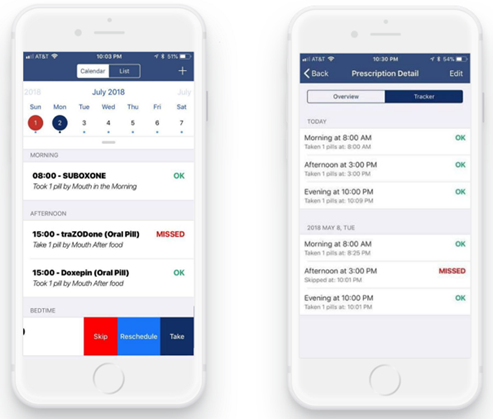
Body
Connecting with Your Grandkids
Guest article by Evangeline B. White of whereisyourangel.com

Some people say becoming a grandparent is their reward for raising kids. Others aren’t quite so sure what to do or how to connect with their grandkids “in this day and age.” Certainly kids today are raised differently than kids were 50+ years ago. Although many things have changed, one thing remains the same – a person’s deep need for connection.
How do you connect with your pint-sized offspring who knows how to work your cell phone better than you do? Being present in the moment with them is one of the best ways. Take an interest in them and in what they are doing. No matter their age, book reading is always a great way to draw a bridge and bridge the gap between generations.
There are some great classic tales that are still circulating which make wonderful reads. Anything by Dr. Seuss and The (original) Box Car Children are some classics that come to mind. Even when kids are pre-teens, find out what they are reading. What is it about the book that interests them? See if they would want to have a “book club” with you. Both of you can read the same book and then get together over lunch and ice cream to talk about it.
If your grandchild has a special need or is going through a traumatic time, consider a more interactive book that comes with something tactile. The Where Is Your Angel?™ series of books comes with a plush watchman angel and printable activities. Even if your grandchild does not have sensory or sensitive issues going on their lives, this book is a great gift to bring you closer together.
If you or one of your grandkids are the more crafty type, I would suggest you both create your own personalized history or biography book. You can write, tell, and draw about your childhood. Here are some ideas to get you going:
1.) Describe when you were a kid.
2.) Write about going to school – how you got there, what you wore, what you studied.
3.) What did you do after school?
4.) What was going on in the world? (a war, an invention, the space race, etc.)
5.) What were some of your favorite foods and activities, and how much did they cost?
There are many things you can include as you become the “publishers” of your own book.
Being a grandparent can be a rewarding experience – for you, for your grandkids, and for your grown children. Why not pick up that thing called a phone today and schedule some time for connection?
#grandparents #grandkids #rewarding #connecting #books #whereisyourangel #evangelinebwhite
Photo via Pixabay
Bicycling Growing in Popularity with Senior Adults
Guest article via Dave Hogan of thisretirementlife.com

Staying physically fit is important for people of all ages, but as we grow older there are fewer vigorous activities we can do. Most of us are long past the days of jogging and racquetball. One fitness activity that many seniors can continue to enjoy is bicycling, which helps explain why biking is growing in popularity among senior adults.
Seniors are the fastest growing segment of new bike riders. One study found that seniors ages 60 to 79 accounted for one-third of the growth in all bicycling in recent years.
Seniors have generated a revolution in the types of bikes manufacturers are making. Older riders generally favor comfortable cruiser-style bikes with wide seats and tires versus bikes built for racing and mountain biking. Some baby boomer cyclists prefer the low-riding, three-wheel recumbent bikes due to their better stability. Seniors are also one of the largest groups of cyclists opting for electric-powered bicycles, which make riding easier, especially on hills, with less joint and breathing pain.
Health benefits of cycling
Numerous studies have documented how bicycling improves the health of riders, including seniors. The health benefits of riding a bike include:
- Biking is a low-impact aerobic activity that is good for the heart. Research shows that regular cycling improves the cardiovascular system 3 to 7 percent, lowers your resting pulse rate, and reduces blood fat levels. Biking burns fat and builds muscle too.
- Regular bicycling leads to improved weight management since cycling just 30 minutes a day can burn 300 or more calories. By keeping one’s weight under better control, cycling also helps fight diabetes and other diseases tied to being overweight and leading a sedentary lifestyle.
- Cycling improves mental health. A survey by Cycleplan found that 75 percent of riders said biking improved their mental health. Exercise in general is known to help improve one’s mood and fight anxiety and depression. Spending more time outdoors is also shown to improve one’s mental state. Biking is ideal because it combines exercise with being outdoors and is an activity that most participants find enjoyable and invigorating. What’s more, biking is often a social activity, either riding with a partner or seeing neighbors in your community as you ride. This too can improve one’s mental and emotional state.
- Fascinating new research suggests that biking also improves memory retention and may slow down dementia. Scientists are still exploring all the reasons, but it is believed that the rapid pedaling motion in cycling plays a role, as does the increased blood flow to the brain and having to balance oneself on a bike.
Tips for Senior Bicyclists
Want to get back on the saddle and ride a bike again? Or perhaps you are riding for the first time. Here are some suggestions to make your transition a smooth one:
- Buying the right bike is important. The bike you rode earlier in life, perhaps with low handlebars and skinny tires, may not be the right bike for you now. Look for a senior-friendly design, perhaps including a “step-through” frame that makes getting on and off the bike easier. To ensure you get the right bike, buy through a bike shop, and preferably one that focuses on selling to senior adults. A good bike shop will make sure the bike is properly assembled and sized correctly for your height.
- Consider an electric-powered bicycle. “E-bikes” look like traditional bicycles and still require you to pedal. Where they differ from traditional bikes is they will give you a boost when you need it, such as going up a hill. This is thanks to an electric motor which you control from the handlebars. Seniors with joint pain or breathing problems especially will find e-bikes the best choice for enjoyable cycling.
- Get the right safety equipment. Always wear a bike helmet when riding. This is the most important safety feature of all. It’s also a good idea to equip your bike with a mirror, usually mounted on the left side of the handlebars, to help you see motorists or other cyclists behind you. Some bikers also like to wear bike gloves that will protect the palms of their hands in the event of a fall.
- Start slow and don’t give up. If you haven’t ridden a bike in many years, don’t be surprised if it feels awkward at first and you come back from your first ride with sore muscles. Like walking or other exercises, you will build endurance and strength the more often you ride. Make it a goal to ride at least 30 minutes a day at a steady pace for at least five days a week.
- Be careful where you ride. Communities across the country are building thousands of miles of trails that are solely for pedestrians and bicyclists. This is often the safest place to ride, so look for bike trails in your area. One good place to find trails is TrailLink, hosted by the Rails-to-Trails Conservancy. Your local bike shop where you bought your bike should also be able to give you trail information. Otherwise, stick with lower-traffic residential side roads or ride in parks. Don’t confuse bike trails with bike lanes. Many cities simply repaint the lines of existing city streets to make room for a small lane for cyclists. Sometimes a bike lane is the only workable option, but because you are still riding next to motorized vehicles, bike lanes are more dangerous than bike trails. Stay on trails and in residential areas when possible.
Bicycling is a wonderful activity for seniors, improving both our mental and physical health. It’s a low-cost form of exercise many healthy seniors can continue until very late in life. Why not give biking another try?
Seniors, Get Your Best Sleep Now
Traditional wisdom says that seniors need only a few hours of sleep per night. However, the National Institute of Health states that adults over the age of 65 need seven to nine hours of sleep per night just like all adults.
How can you improve your sleep?

How To Get A Good Night’s Sleep
If you’re struggling to get a good night’s sleep, these tips may be able to get you back on track:
- Find the best mattress for your body.
A good mattress should support you properly and address any issues you have such as pain. Ideally, you should buy a mattress that you can “test drive” for a few weeks. This post from Spine Health teaches you how to choose a mattress for lower back pain. - Create a bedtime routine.
Creating a regular routine before bed can help ease you into sleep. Part of that routine should be waking up and getting to bed around the same time every day. You should also avoid triggers such as caffeine, spicy foods, unpleasant topics and stressful books before bed. Here are 10 calming activities that will help you get to sleep from NoSleeplessNights.com. - Get proper diet and exercise.
Eating for your body and health will be helpful, particularly if you avoid heavy foods or foods that trigger stimulation. Additionally, regular exercise done during the day (but not before bed) can help you sleep. Research shows that exercise actually benefited patients with insomnia more than medications designed for sleep. - Set up a good sleep environment.
Be sure that your bedroom is set up for sleep by making sure your curtains or blinds filter out all light. Set your thermostat at a comfortable temperature. Buy a good quality pillow that supports your neck. You may want to buy a white noise machine to help you fall asleep. - Avoid screen time an hour before bed.
Tablets and smartphones emit something called blue light, which can disrupt your sleep patterns. Read more about this health hazard in this article from Scientific American. You can download a blue light blocker for your device to protect you.
Sleep Issues For Older Adults
Some of the common causes of sleep problems for seniors listed by Better Health While Aging include:
- An underlying medical condition.
- Sleep apnea, snoring, or other breathing problems associated with sleep.
- Issues caused by a limb, such as restless leg movement or periodic limb movement.
Additionally, discomfort, stress, depression and anxiety are all issues that can contribute to poor sleep habits.
When To Talk To Your Doctor
How do you know if a sleep issue is solvable or is a symptom of something deeper? There are a few things you can try:
- Buy a journal to track your sleep habits. Be sure to include instances of interrupted sleep as well as when you wake up feeling fatigued.
- Think about whether there have been any major stressful changes in your life. You may need to address those issues with a therapist.
- If you have pain or intense discomfort not relieved by a new mattress, or any worsening breathing problems, see your doctor.
According to Jason Harvey, co-administrator of Live Free Home Health Care, “Sleep deprivation symptoms also mirror other common signs of aging or disease, making it difficult to notice or diagnose a sleep disorder. Having a professional assessment and respite care during evening hours can go a long way in helping families get to the root of a hidden problem.”
Seniors can benefit physically and emotionally from proper sleep habits. Take steps to improve your sleep today.
Not All Disabilities Are Visible
Guest article from Mobility Products 4 U
 As I run my website and I also have disabilities of my own, severe arthritis and sleep apnea, I am aware of others around me who clearly show signs of being disabled, but not all disabilities are visible. Recently I saw what think is a new sign in an Asda store, and I thought what a very good and sensible sign it was.
As I run my website and I also have disabilities of my own, severe arthritis and sleep apnea, I am aware of others around me who clearly show signs of being disabled, but not all disabilities are visible. Recently I saw what think is a new sign in an Asda store, and I thought what a very good and sensible sign it was.
All too often you can see people look and ‘tut’ as they see what seems like a normally fit and healthy person enter a disabled toilet. However, you do not need to be in a wheelchair or mobility scooter or using crutches/walking sticks or other living aids in general in order to be disabled.
Asda have clearly embraced this position and it is so good to see that people are being made aware that they need to be more understanding when they see people going into disabled toilets or indeed using disabled parking spaces.
I do not want to elicit sympathy for my arthritis, but it is often easy to see the amount of pain I am in, however, my sleep apnoea, which can cause all sorts of problems when it is at its worst, is not easily spotted and the same goes for an awful lot of disabilities that other people struggle to cope with.
Can you imagine how it must be to have a stoma bag fitted and need to empty it when you are out doing your shopping?
Very few people would ever realise you have one on, but obviously those having to cope with it will not readily show to others the problems that they have.
This doesn’t change the fact that their disability is as difficult to cope with as any of those I suffer from, but I probably get more sympathy as my arthritic problems are clearly visible.
So please remember not all disabilities are visible and let us all congratulate Asda for their signage and encourage other companies to follow their lead.
Deadly Chemical Restraints
Guest article by Gary W. Poliakoff
The improper use of antipsychotic drugs as chemical restraints — for staff convenience or to discipline a resident — has been used in nursing homes for decades. The drugs sedate residents so they don’t ask for assistance or complain. It is one way to overcome the epidemic of short-staffing at nursing homes. Nursing homes have been exaggerating levels of nursing and caretaking staff for years, according to a study of federal data by Kaiser Health News.
In 1975, the Senate released a report called “Drugs in Nursing Homes: Misuse, High Costs, and Kickbacks,” detailing the same misuses today. In the past decade, many manufacturers of antipsychotic drugs have been sued for mislabeling the medications to promote them as appropriate for treating older people with dementia. However, the Food and Drug Administration required manufacturers to place the strongest caution, known as a “black box warning,” on the packaging to advise against the use of antipsychotics in these patients; such drugs double the risk of death and have never been approved as effective or safe for treating symptoms of dementia.
Despite the explicit and dire warnings, nursing homes still often administer antipsychotic drugs, oftentimes without seeking informed consent first. Families must be aware of the dangers and fight to keep their loved ones off these dangerous drugs.
These powerful drugs are misused because there is a lack of awareness of their dangers, despite the well-known black box warnings; lack of training in dementia care; and to compensate for understaffing. They are used to control people without concern to the irreversible dangers to the residents.
As attorneys who specialize in nursing home neglect and abuse cases that often involve the wrongful death of a parent caused by chemical restraints and antipsychotics, we can help you make sure you are provided the right information to make an informed decision. If a loved one has been neglected or abused at a nursing home, please contact us for help.
Gary W. Poliakoff is the senior partner at Poliakoff & Associates who specializes in nursing home neglect and abuse cases, and has a blog called www.SCNursinghomelaw.com
Never Too Old: Safe and Mindful Weight Loss for Seniors

Maintaining a healthy weight is important no matter what age you are. For seniors, carrying a lot of excess weight into old age is hard on the organs, can contribute to diabetes, and makes it hard on the hips, knees, and ankles, particularly for older adults suffering from arthritis. Yet it’s inadvisable for older adults to jump into just any diet that comes along. Some of the popular commercial diets on the market feature processed foods that can be high in sodium, a problem for individuals with high blood pressure. Elderly people looking to lose weight should always consult with their physician and, if possible, with a dietitian before committing to a diet.
A senior-appropriate diet
It’s important that a senior-friendly dietary approach take into account a sedentary senior lifestyle, which doesn’t foster a strong appetite. Author Mike Moreno, Ph.D., recommends that smaller, nutritionally balanced meals be eaten more frequently. Protein should be the cornerstone of a senior diet, including egg whites, fish, chicken, and turkey. Fiber should also be a mainstay of any senior diet because it aids digestion and weight loss and can lower bad cholesterol and help control blood glucose. Fruit and vegetables, legumes, whole grains, wheat germ, lentils, and brown rice are excellent sources of fiber for seniors.
It’s also recommended that seniors drink eight to 10 glasses of water to help dissolve the elements of a high-fiber diet. Green and black tea, juice, and other non-caffeinated liquids are also excellent augmentations for a high-fiber diet. A diet rich in fiber makes you feel full and less likely to continue eating between meals. For seniors, it helps combat constipation, a chronic problem among many senior citizens because the contractions that stimulate bowel movements are less prevalent among seniors.
Appetite
Stimulating appetite is important for senior citizens, who need to eat so they can maintain a healthy nutritional intake. Engaging in some form of regular exercise is an excellent way to help control one’s weight level and make you feel hungry. Always talk to your doctor before beginning an exercise regimen. You could aggravate an existing condition or strain something that might require treatment.
If you’re unaccustomed to physical exercise, start with some basic exercises like sit-ups and toe touches. Walking is one of the best forms of exercise because it gives you a good aerobic workout and exercises muscle groups in your lower body. It also gives you an elevated energy level and helps you feel better by stimulating neurotransmitters in the brain.
If you dislike exercising by yourself, turn it into a social activity. Get a group of like-minded friends together to go walking at a nearby mall or at your favorite park. It’s fun, and you’ll be helping each other engage in a healthful group activity. When it comes to walking, it’s a good idea to stay with a nice level surface instead of a hilly area, where joint pain and fatigue can put a quick halt to your exercise plans.
The great thing about weight loss is that it’s not an age-specific wellness activity. It’s always a good idea, as long as you go about it the right way. Your physician can help you set up a diet and exercise plan that works for you.
Using Smartphones To Help Manage Your Medications
Guest article by Medidex

Age should be its own reward; for the elderly, it is important to make the most of their golden years, spending it with family and friends instead of at the pharmacy or doctor’s office. But for many senior citizens, managing and adhering to their medication can chew up the bulk of their time and patience and eat away at their moral. Managing multiple medications is unavoidable when it comes to chronic illness and geriatric care because the risk of improperly adhering to medications can lead to serious health complications.
Research has shown that half of all patients misinterpret at least one of their prescription labels. This kind of user-error is exceedingly common among older demographics. Of course, pharmacies do their part in printing essential information such as health risks and dosage requirements, but they still cannot ensure each medication is taken properly; it is hard enough having to take one pill daily, any more than that starts to feel like a juggling act.
There are a few methods to help make medication management more stress-free and routine—such as pill dispensers, medication calendars, handwritten lists of medications, and of course meticulous relatives. Smartphones are now improving on these existing medication management methods and becoming powerful solutions to help support patients with the many challenges of living with chronic conditions. Let us look at some simple ways smartphones are being used to facilitate better medication adherence, and therefore healthier and longer lives.
1. Keep a list of current and past medications always handy
A major hurdle to managing medications is understanding the medications you are taking. With names like Idarucizumab and AbobotulinumtoxinA, many medications are just impossible to memorize. While those examples may be extreme, even more common brand name drugs like Symbicort® may be difficult to recall on hand. For somebody taking 2-3 drugs this might not be the biggest deal, but many older patients end up on way more meds than that.
Having your medication history handy is a major convenience for things like intake during doctor visits, and it can even avert disaster in emergencies where time and accurate information are critical. Many patients I speak with have no method for remembering their medication names, but some do keep a list on a notepad or post-it note for reference. This can be a good solution to remembering your meds, especially if you keep the list on your person at all times such as in a wallet or purse.
With mobile smartphones, it is extremely simple to keep yourself from losing your medication list by storing it in your phone. We usually have our phones with us, and they can be easier to read than hand written notes. Creating a list can be done on a phones note pad, but for an easier and more robust experience that includes things like a drug name search, listing available dosages, and medication directions; you can try out something like the free MedManage app to create an electronic medication list. Using an app that’s customized for medications can provide you with a medicine list that has plenty of useful info, minus the extra effort. As an example, check out the picture below of a couple of medication lists in MedManage. It includes info such as the disease indication, as we all as comprehensive dosage directions which are extremely useful for you and your healthcare provider to know.

2. Quickly reference drug information
Another way smartphones can be helpful to properly managing medication use is as a reference tool for drug info. A person should definitely be wary about information on the internet, especially something like medical health information. However, with limited face-to-face time with physicians, doing some independent research can be extremely helpful before or after a doctor’s appointment.
You can use a drug reference database to search for the medications your doctor recommends or prescribes. This will allow you to be more informed about what the drug is and how it works, potential side effects or adverse events, medication usage guides, storage instructions, and more. Since it is all on the internet, all this information can be readily accessed on the go using a smartphone.
Researching the treatment options available is also important because there are a variety of ways to treat illnesses. Having an informed patient who understands the pros and cons of different treatment options can be extremely helpful to a healthcare provider, and aid in making a personalized treatment plan. For example, a person with asthma who doesn’t seem to be getting benefit from their inhaler could look up what types of inhalers are available and discuss those options with their doctor based on what they read.
3. Utilize medication reminder alerts or alarms
Having an alarm or alert can be extremely helpful in remembering to take medications, especially for patients experiencing memory loss. Electronic reminders have been shown to be effective at improving adherence throughout a wide range of scientific studies. The multi-study review looked at electronic alarms and phone message alerts and found them both to have a positive effect on medication adherence. If your medication schedule is simple, a daily alarm or two on your phone can help you stay on top of taking your meds. For more complicated drug regimens you can use the free app mentioned above, MedManage, to set up several automated electronic medication reminder alerts easily and hassle free.
The increase in healthcare information and technology is increasing our ability maintain health records easily and access information online on demand. While these changes might seem scary at first and difficult to navigate, they are there to be helpful and save people time. Why not try it out and see if it works for you?
How to Choose a Nursing Home

Guest article by Caregiverlist.com
Nursing homes often become an extension of a hospital stay for seniors on Medicare or Medicaid. When choosing a nursing home for rehabilitation, it’s important to know Medicare will pay only a portion of the costs. For example, Medicare will cover the daily fee, for the first 20 days, upon pre-approval by a medical doctor and then may pay for days 21 through 100, the maximum stay for reimbursement. This means that Medicare’s full benefit upon doctor approval only pays for a little more than three months of a nursing home stay.
Medicaid, the low-income version of Medicare, does pay for ongoing stays in nursing homes that accept Medicaid as payment.
Tips for Choosing a Nursing Home
- Organize the senior’s long-term financial capabilities including monthly income and all assets owned, including homes and cars. Review Medicaid financial qualifications for the state where the senior lives. This allows you to financially prepare for long-term nursing home care needs and possible Medicaid-spend down
- Find nursing homes in your area who accept Medicare as payment vs. Medicaid as payment. Usually nursing homes primarily accepting Medicare or private pay will allow a senior to stay if they spend-down to Medicaid even though they would not accept the senior on Medicaid as a new patient. Keep in mind that as Medicaid reimbursements can be lower, the 100% Medicaid nursing homes may not offer as many amenities.
- Review Caregiverlist nursing home star ratings, which include the top criteria impacting quality of care: Overall Medicare Star Rating, % of Short-stay Residents with Pressure Sores, Certified Nursing Aide (C.N.A.) hours per resident per day, % of Long-term Residents whose need for help with Daily Activities has increased. Make special note of the C.N.A. hours per resident as many times nursing homes suggest hiring a private duty caregiver if more care is needed when the staffing ratio is only 1 C.N.A. to 12 or more residents.
- Review the ownership of the nursing home. Nursing homes may be owned by hospitals or healthcare groups or equity groups. This will be an indication of what focus is more important: care or profits.
- Find licensed senior home care agencies in your area to have as an alternative to nursing home care. Senior home care agencies provide one-to-one care and often cost less than a nursing home.
You Want Me to Do What With My Leg? The Surprising Benefits of Yoga for Seniors
As we age, the general consensus seems to be that we need to take it easy, but this couldn’t be farther from the truth. Less movement means we are more likely to experience health issues such as arthritis, lower joint flexibility, chronic pain, and sleep issues. Luckily there is an activity that can help with these issues, even if you are already experiencing them – yoga.
You might be thinking that you can’t possibly twist yourself into a pretzel, but yoga doesn’t have to be painful or even dangerous. a such as the Warrior, Tree, Seated Twist, and Cow are all moves with low impact and strain, and all provide some of the following benefits:
You might be thinking that you can’t possibly twist yourself into a pretzel, but yoga doesn’t have to be painful or even dangerous. Simple moves such as the Warrior, Tree, Seated Twist, and Cow are all moves with low impact and strain, and all provide some of the following benefits:
1. Movement – You may have noticed that your movement, balance, and flexibility just aren’t what it used to be. While yoga can’t return you to the limberness of your twenties, it can greatly improve it. Think of yoga as a daily realignment, teaching your body to naturally fall into the proper posture to maximize comfort, balance, and even respiratory function. The smooth, fluid movements are low-impact, working to slowly work stiff joints. After each session you’ll notice your flexibility is slightly improved from the last time.
2. Pain Relief – Millions of people suffer from chronic pain, desperate for relief. The good news is that yoga can help. Chronic pain has been shown to decrease gray and white matter in the brain, leading to decreased cognitive functioning and higher pain perception. Yoga replenishes your brain matter as well as reduces one of the common aggravators of chronic pain – stress. Yoga that focuses on relaxation, such as restorative or gentle yoga, could be the pain reliever you are looking for, giving you the ability to pursue other physical activities that your pain once kept you from.
3. Sleep – How many times do you see seniors depicted as spending their day napping on the sofa? While this is a stereotype, you might prefer a nap if you aren’t getting enough sleep at night, which can carry over into your daily life. Would you rather go on a brisk walk or take a snooze since it didn’t happen last night? Yoga can promote healthy sleep patterns, giving you the energy to conquer the day and put a little pep in your step.
If you are interested in giving yoga a try, give your local yoga studio a call or check with a senior center to see about potentially starting a class. Yoga can be done in your home as well, so invite over a friend, and get to it.

By now we all know that physical activity is good for you, but how much walking can you do before you are bored of the idea all together? Don’t give up just yet, as regular exercise can prevent and delay disease, improve mood, and increase flexibility. If you are looking for a fun way to get moving again, check out these suggestions:
1. Bowling – You’re probably wondering how bowling is possibly considered a form of exercise. Well, it is! The metabolic rate for sitting is 1.0, which is the number of calories burned. Bowling comes in at 3.5, which is comparable to playing a round of golf (minus the sweat). While bowling won’t improve your cardiovascular system, your musculoskeletal system will take a positive hit from the short bursts of energy: getting up, taking your turn, repeat. If you’ve lived a sedentary lifestyle up to this point, bowling is a great way to make the transition.
2. Wii Games – If you have grandkids or have been around young children, you are likely familiar with the Wii craze. A Wii is a gaming system that allows you to enter the virtual world via a remote. You can golf, bowl, play tennis, practice yoga, or even drive a racecar. While this system was originally intended for entertainment, add-ons such as balance boards and remotes that monitor arm movement encourage physical activity and fun.
3. Spinning – Dust off your old bike or join a spinning class to enjoy a favorite childhood pastime. While your days of pedaling furiously up and down hills might be behind you, you can certainly slow it down to a more manageable speed, strengthening your heart and raising your lung capacity. You’ll find that you also build muscle strength, fighting back against muscle loss and improving balance and coordination.
As you can see, getting active doesn’t have to be boring or monotonous. Find an activity you enjoy and reap the physical health benefits as an added bonus.
Guest article from Mobility Products 4 U
As I run my website and I also have disabilities of my own, severe arthritis and sleep apnoea, I am aware of others around me who clearly show signs of being disabled, but not all disabilities are visible. Recently I saw what think is a new sign in an Asda store, and I thought what a very good and sensible sign it was.
All too often you can see people look and ‘tut’ as they see what seems like a normally fit and healthy person enter a disabled toilet. However, you do not need to be in a wheelchair or mobility scooter or using crutches/walking sticks or other living aids in general in order to be disabled.
Asda have clearly embraced this position and it is so good to see that people are being made aware that they need to be more understanding when they see people going into disabled toilets or indeed using disabled parking spaces.
I do not want to elicit sympathy for my arthritis, but it is often easy to see the amount of pain I am in, however, my sleep apnoea, which can cause all sorts of problems when it is at its worst, is not easily spotted and the same goes for an awful lot of disabilities that other people struggle to cope with.
Can you imagine how it must be to have a stoma bag fitted and need to empty it when you are out doing your shopping?
Very few people would ever realise you have one on, but obviously those having to cope with it will not readily show to others the problems that they have.
This doesn’t change the fact that their disability is as difficult to cope with as any of those I suffer from, but I probably get more sympathy as my arthritic problems are clearly visible.
So please remember not all disabilities are visible and let us all congratulate Asda for their signage and encourage other companies to follow their lead.
